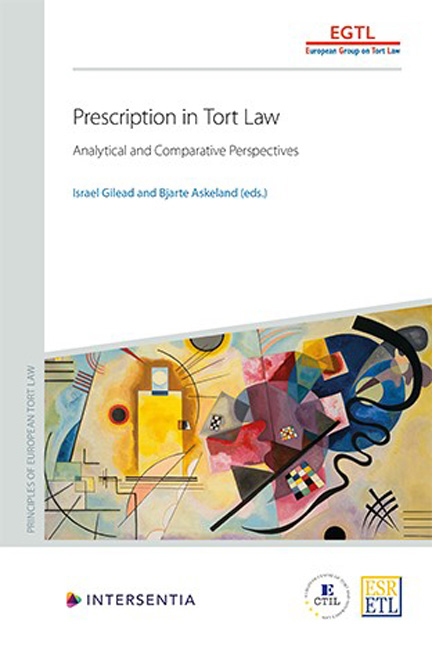Book contents
- Frontmatter
- Dedication
- Acknowledgements
- Contents
- List of Authors
- PART I THEORETICAL AND COMPARATIVE ANALYSES
- Analytical and Comparative Report
- Economic Analysis
- PART II PRESCRIPTION IN TORT LAW OUTLINED
- Case Scenarios
- Austria
- Belgium
- Czech Republic
- England and Wales
- France
- Germany
- Greece
- Italy
- The Netherlands
- Norway
- Poland
- South Africa
- Spain
- Switzerland
- United States
- European Union
- Appendix: Questionnaire
- About the Editors
Norway
Published online by Cambridge University Press: 22 December 2020
- Frontmatter
- Dedication
- Acknowledgements
- Contents
- List of Authors
- PART I THEORETICAL AND COMPARATIVE ANALYSES
- Analytical and Comparative Report
- Economic Analysis
- PART II PRESCRIPTION IN TORT LAW OUTLINED
- Case Scenarios
- Austria
- Belgium
- Czech Republic
- England and Wales
- France
- Germany
- Greece
- Italy
- The Netherlands
- Norway
- Poland
- South Africa
- Spain
- Switzerland
- United States
- European Union
- Appendix: Questionnaire
- About the Editors
Summary
INTRODUCTION
The law of prescription regarding tort claims in Norwegian law is regulated in the general act on prescription of claims. The origin of the provision is the former act on prescription of claims of 1896. The subject of prescription has not generated much discussion over the years. The major literature on the field is primarily one comment to the statutory law and a doctoral thesis on the starting point of the prescription period, apart from a few other contributions. A few minor doctrinal works analyse the special problems of prescription regarding tort claims.
DEFINITION OF PRESCRIPTION
The definition of prescription under Norwegian tort law is very much in accordance with the definition‘a legal institution that prevents P from enforcing an alleged right against D because of the running of a specified period of time on the tort claim‘.
The claim is a right to damages for harm caused that comes into being once the defendant has committed the tortious act. This is the general starting point, but there are some modifications, see infra 27– 30.
THE NATURE OF PRESCRIPTION AND ITS EFFECTS
The Norwegian concept of prescription only affects the claimant's right to compensation when not suing within the time period. Hence, the material obligation for the defendant exists after the prescription period in the sense that a debtor who mistakenly has paid a claim after the prescription period has expired, cannot claim restitution based on unjust enrichment. The effect of barring the claim is considered to be material, having effect both within and outside courts. It is not merely a procedural defence for the defendant. In fact, one may on principle file a claim after the prescription period has expired, because the civil litigation rules accept the plaintiff's pretention of having a valid claim. In the doctrinal literature the prescription claim is in general perceived as a material, not a procedural matter.
- Type
- Chapter
- Information
- Prescription in Tort LawAnalytical and Comparative Perspectives, pp. 483 - 514Publisher: IntersentiaPrint publication year: 2020



